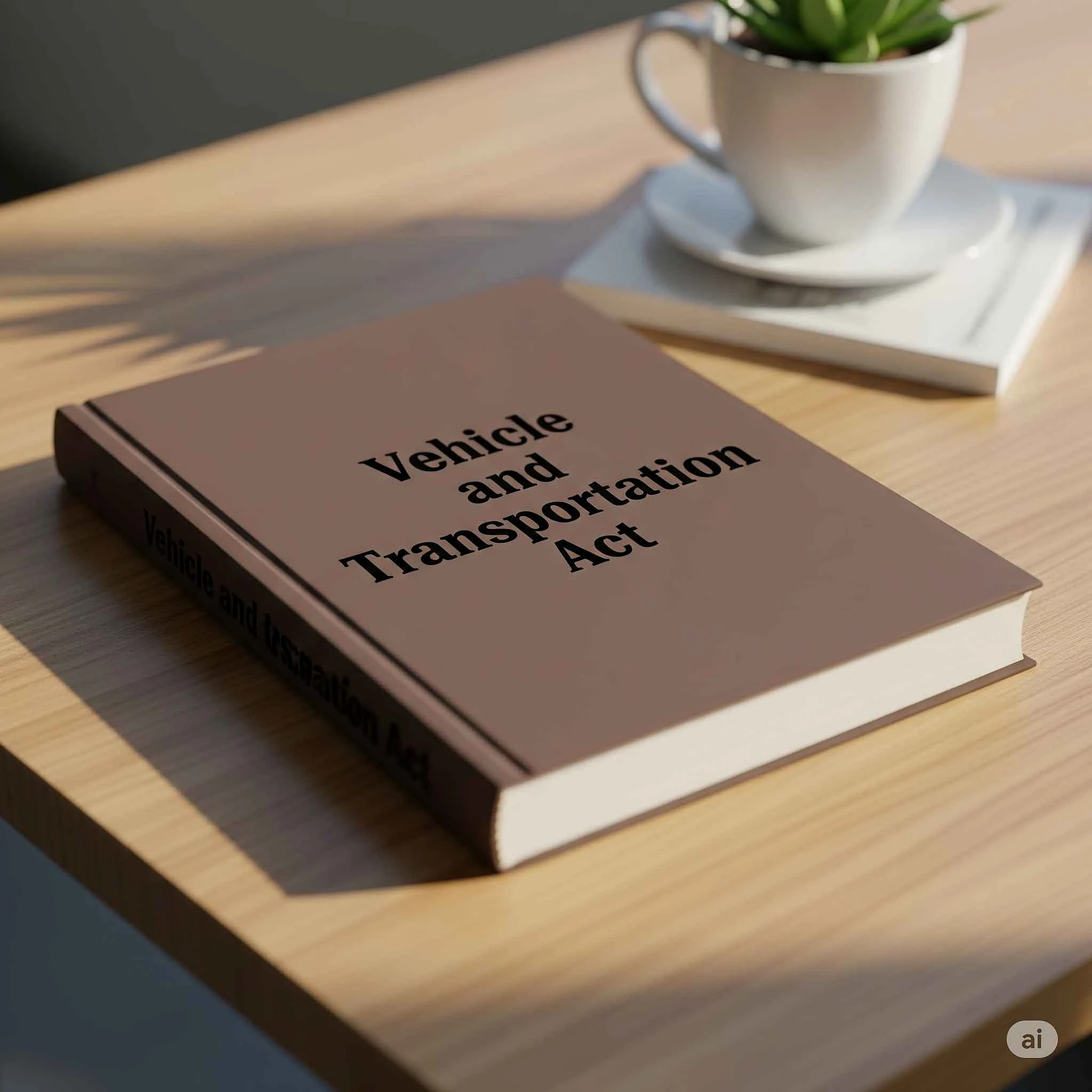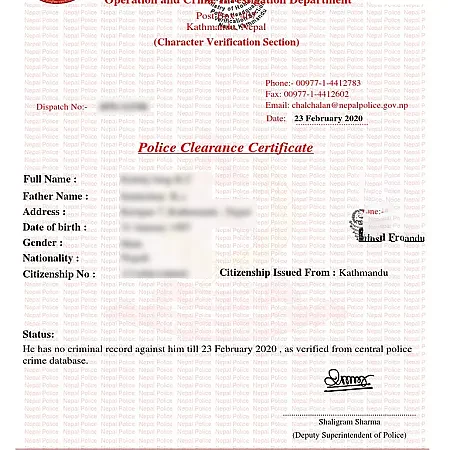Introduction to Nepal's Vehicle Act
The "Vehicle and transport management act 2049" is published in 1992 by Ministry of Physical Infrastructure & Transport and serves as the primary legal framework governing vehicle registration, licensing, and transportation management in Nepal. This document is the Motor Vehicles and Transportation Management Act of 2049 BS (1992 AD) from Nepal, enacted during a crucial period of Nepal's transportation sector development.
Be it enacted by the Parliament in the twenty first year of the reign of His Majesty King Birendra Bir Bikram Shah Dev, this comprehensive legislation has been the cornerstone of Nepal's transportation regulatory system for over three decades.
Historical Context and Legislative Framework
It was enacted by Parliament during the reign of King Birendra Bir Bikram Shah Dev to regulate motor vehicles and transportation through legal provisions. The Act was designed to bring order to Nepal's rapidly growing transportation sector and establish standardized procedures for vehicle management.
Key Legislative Objectives:
- Establish systematic vehicle registration procedures
- Create standardized licensing requirements
- Regulate public and private transportation services
- Ensure road safety and traffic management
- Facilitate proper identification of vehicle categories
Vehicle Classification System
This document outlines regulations for vehicle and transportation management in Nepal. It classifies vehicles based on weight into large, medium, and small. The classification system provides a structured approach to vehicle categorization and regulation.
Weight-Based Classification
|
Vehicle Category |
Weight Range |
Examples |
Registration Requirements |
|
Small Vehicles |
Up to 3,500 kg |
Motorcycles, Cars, Light trucks |
Standard registration |
|
Medium Vehicles |
3,501-10,000 kg |
Buses, Heavy trucks |
Additional permits required |
|
Large Vehicles |
Above 10,000 kg |
Heavy commercial vehicles |
Special licensing |
Purpose-Based Vehicle Types
It defines various vehicle types like public, tourist, private, government, and diplomatic vehicles, each with specific regulatory requirements and operational guidelines.
1. Public Vehicles
- Used for public transportation services
- Require route permits and fitness certificates
- Subject to fare regulation and safety standards
2. Tourist Vehicles
- Designated for tourism-related transportation
- Must comply with tourist safety regulations
- Special licensing for tourist operators
3. Private Vehicles
- For personal use only
- According to the Motor Vehicles and Transport Management Act, private vehicles should not be used for transport service
- Standard registration and licensing requirements
4. Government Vehicles
- Official use by government institutions
- Exempted from certain fees and procedures
- Must display official identification
5. Diplomatic Vehicles
- Used by diplomatic missions
- Special registration plates and procedures
- Exempted from certain regulations
Registration Requirements and Procedures
It requires all imported vehicles to register with the local police station and obtain a registration certificate. The registration process ensures proper documentation and legal compliance for all vehicles operating in Nepal.
Registration Process Steps
- Documentation Submission
- Vehicle purchase documents
- Import clearance certificates
- Insurance documents
- Owner identification
- Technical Inspection
- Vehicle fitness verification
- Safety equipment check
- Emission standards compliance
- Physical inspection
- Fee Payment
- Registration fees
- Road tax
- Administrative charges
- Penalty fees (if applicable)
- Certificate Issuance
- Registration certificate
- Number plate allocation
- Vehicle identification documents
Recent Registration Reforms
The recent revision of vehicle registration procedures is also noteworthy. Vehicles produced or assembled in Nepal no longer require customs declarations for new registration, transfer registration, alteration registration, auction registration, re-registration, and name change.
The Transport and Vehicles Act-2049 BS, along with the Transport Management Directive, 2060 BS, which underwent revision in 2074 BS, has played a significant role in shaping vehicle registration regulations in Nepal.
Driver Licensing System
It defines various terms related to motor vehicles, transportation services, drivers licenses, and more. The licensing system ensures that only qualified individuals operate vehicles on Nepal's roads.
License Categories
|
License Type |
Vehicle Category |
Validity Period |
Requirements |
|
Motorcycle |
Two-wheelers |
5 years |
Written + Practical test |
|
Light Vehicle |
Cars, small trucks |
5 years |
Comprehensive examination |
|
Heavy Vehicle |
Buses, large trucks |
3 years |
Additional training required |
|
PSV License |
Public service vehicles |
3 years |
Professional driving course |
Licensing Requirements
- Minimum age criteria
- Medical fitness certificate
- Written examination
- Practical driving test
- Character verification
Department of Transport Management (DoTM) Role
The Department of Transport Management (DoTM) in Nepal plays a crucial role in regulating and overseeing the country's transportation sector. Key aspects of the approval process include vehicle registration, route permits, driver licensing, and adherence to safety regulations.
DoTM Functions
- Vehicle registration and licensing
- Route permit issuance
- Driver license administration
- Safety regulation enforcement
- Transportation policy implementation
The DoTM aims to maintain a well-organized and safe transportation system throughout Nepal, making the approval process a critical step for all transportation stakeholders.
Regulatory Compliance and Standards
The regulations aim to bring order to transportation and properly identify different classes of vehicles. This systematic approach ensures standardized operations across Nepal's transportation sector.
Safety Standards
- Vehicle fitness requirements
- Emission control measures
- Safety equipment mandates
- Regular inspection protocols
Operational Standards
- Route permit compliance
- Fare regulation adherence
- Service quality maintenance
- Professional conduct requirements
Recent Amendments and Modernization
The Nefsearch titled, "The 2018 Amendment in Transport Management Directive and its Impact" attempts to determine the kind of changes that have occurred in Nepal's transportation regulatory framework.
Key Recent Changes
- Digital registration systems
- Simplified procedures for locally manufactured vehicles
- Enhanced safety regulations
- Modernized licensing processes
Previously, the complete customs declaration form and receipt of customs duty were mandatory requirements for vehicle registration. However, the recent amendment to the work procedure has opened up new possibilities, enabling the registration of motorcycles manufactured by Yatri.
Ride-Sharing and Modern Transportation
"We have also recommended that the ride-sharing companies should mandatorily have an insurance policy for rider and pillion." The Act continues to evolve to address modern transportation challenges.
Current Ride-Sharing Provisions
- Insurance requirements for operators
- Safety standards for platforms
- Licensing requirements for drivers
- Regulatory oversight mechanisms
Penalties and Enforcement
The Act establishes a comprehensive penalty framework to ensure compliance with transportation regulations.
Common Violations and Penalties
- Driving without license
- Vehicle operation without registration
- Route permit violations
- Safety standard non-compliance
- Document forgery
Enforcement Mechanisms
- Traffic police monitoring
- Regular vehicle inspections
- License verification checks
- Digital tracking systems
Challenges and Future Directions
Current Challenges
- Rapid urbanization impact
- Technology integration needs
- Environmental compliance
- Cross-border transportation
Future Improvements
- Digital transformation initiatives
- Smart transportation systems
- Environmental sustainability measures
- International standard alignment
Impact on Nepal's Transportation Sector
The Motor Vehicles and Transport Management Act 2049 has significantly contributed to:
- Systematic vehicle registration
- Professional driver licensing
- Organized public transportation
- Road safety improvements
- Economic development through transportation
Conclusion
The Motor Vehicles and Transport Management Act 2049 remains the foundation of Nepal's transportation regulatory system. It covers regulations for different types of motor vehicles including public, private, government, cooperative vehicles, ensuring comprehensive coverage of the transportation sector.
As Nepal continues to modernize its transportation infrastructure, this Act serves as the legal backbone supporting orderly development, safety standards, and regulatory compliance. The ongoing amendments and updates reflect the government's commitment to adapting the regulatory framework to meet contemporary transportation challenges while maintaining the Act's core objectives of safety, order, and efficiency.
The Act's influence extends beyond simple vehicle registration to encompass the entire transportation ecosystem, making it an essential reference for vehicle owners, transportation operators, and regulatory authorities in Nepal.
This guide provides a comprehensive overview of the Motor Vehicles and Transport Management Act 2049 of Nepal. For specific legal requirements or detailed compliance procedures, consult with the Department of Transport Management or qualified legal professionals.




